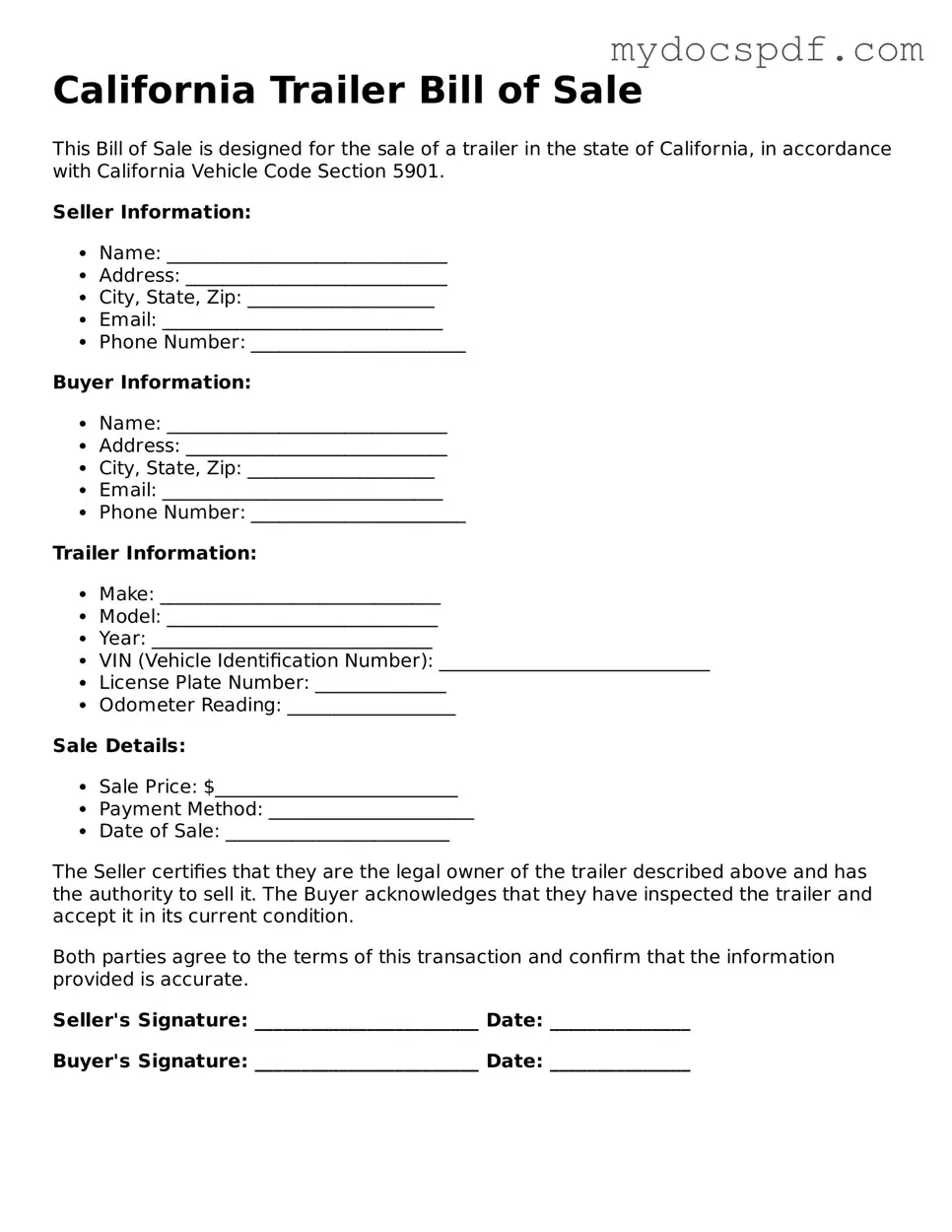California Trailer Bill of Sale
This Bill of Sale is designed for the sale of a trailer in the state of California, in accordance with California Vehicle Code Section 5901.
Seller Information:
- Name: ______________________________
- Address: ____________________________
- City, State, Zip: ____________________
- Email: ______________________________
- Phone Number: _______________________
Buyer Information:
- Name: ______________________________
- Address: ____________________________
- City, State, Zip: ____________________
- Email: ______________________________
- Phone Number: _______________________
Trailer Information:
- Make: ______________________________
- Model: _____________________________
- Year: ______________________________
- VIN (Vehicle Identification Number): _____________________________
- License Plate Number: ______________
- Odometer Reading: __________________
Sale Details:
- Sale Price: $__________________________
- Payment Method: ______________________
- Date of Sale: ________________________
The Seller certifies that they are the legal owner of the trailer described above and has the authority to sell it. The Buyer acknowledges that they have inspected the trailer and accept it in its current condition.
Both parties agree to the terms of this transaction and confirm that the information provided is accurate.
Seller's Signature: ________________________ Date: _______________
Buyer's Signature: ________________________ Date: _______________
